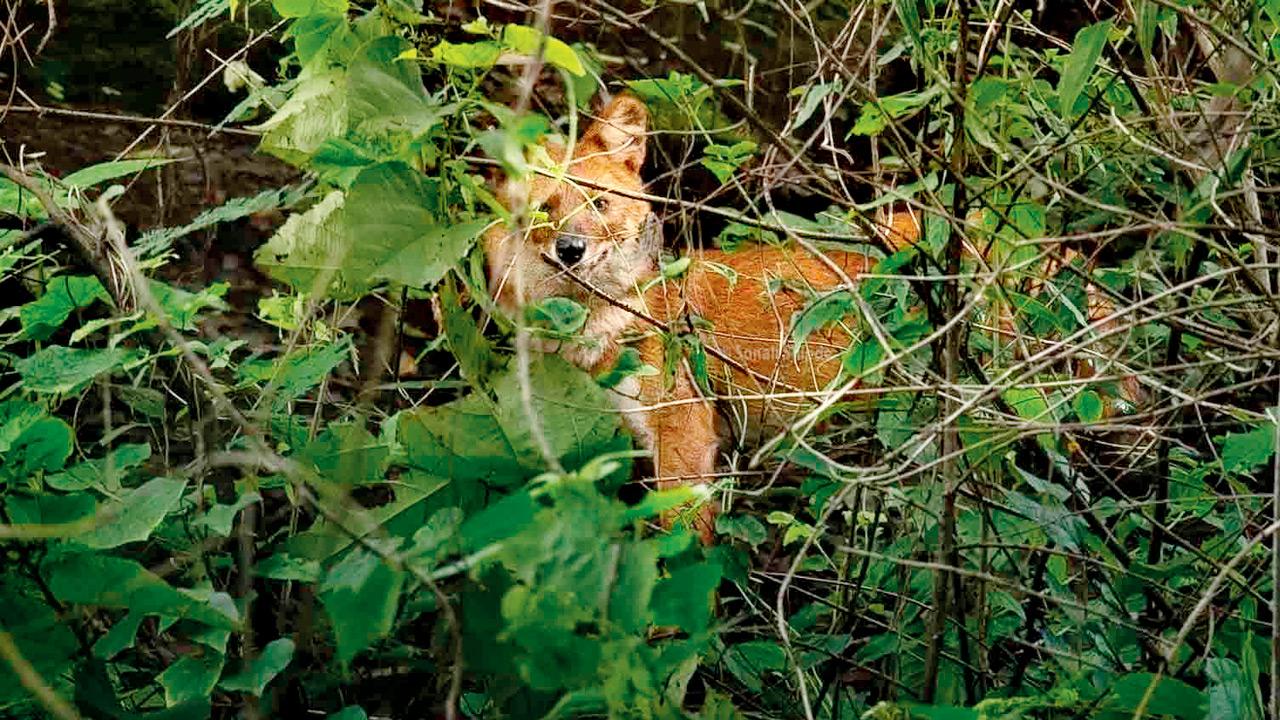A Dhole (Cuon alpinus) was sighted in Panshet in Pune district around 2 pm on September 6, marking the first time researchers obtained photographic evidence of the endangered Asiatic wild dog’s presence in the region. The sighting was made during a field survey by Dr Sonali Shinde, head of the department of biodiversity and environmental science, Maharashtra Education Society’s Abasaheb Garware College, Pune, along with students and Chinmay Sonawane, field researcher at the Ecological Society, Pune. The study will be published soon as a short note.
On their return journey to the city, the team spotted a single individual along the forested slopes. “On spotting each other, both we and the dhole froze, and it didn’t even occur to us to capture the moment,” a team member recalled. Another member said, “Almost immediately, as it moved to hide behind the trees, we managed to take a photograph. Before disappearing into the forest, it looked back at us, as if saying goodbye,” said another team member.
The first confirmed sighting of a dhole in Panshet is unusual, as the area is primarily a dam catchment zone with fragmented secondary forests, managed for water supply and tourism rather than biodiversity protection. In contrast, the Bhimashankar Wildlife Sanctuary, located in the northern part of Pune district, is a legally protected forest area within the Western Ghats, known for its rich biodiversity and evergreen habitats. While dholes have been spotted in Bhimashankar and Tamhini, the Panshet sighting is significant as it highlights the species’ presence in human-dominated, non-protected landscapes, emphasising the importance of ecological corridors between sanctuary and non-sanctuary regions.
The picture of the animal was shared with Dr Pallavi Ghaskadbi, a zoology expert who has worked extensively on this species, and she confirmed it was a dhole. Information about the sighting was shared with Assistant Conservator of Forest Mangesh Tate of the Pune forest department. “This record is of great ecological importance. It highlights the fact that Pune’s landscapes continue to harbour unexpected biodiversity. Observations like this emphasise the need to take biodiversity studies more seriously,” said Dr Shinde.
At Abasaheb Garware College, MSc biodiversity students are regularly exposed to such field studies and wildlife encounters, which strengthen both their academic learning and their awareness of conservation challenges. Chinmay Sonawane, a biologist, added that the sighting underscores the role of the Western Ghats near Pune as a refuge for wide-ranging species, and emphasised the need for continued monitoring of carnivore movement in the region.
About dholes
The dhole is classified as Endangered on the IUCN Red List, with populations under severe pressure due to shrinking habitats, prey depletion, and conflicts with humans and domestic animals. Belonging to the Canidae family, the species is also listed under CITES Appendix II, which restricts its international trade. With an estimated global population of only around 2000 mature individuals, the sighting is a significant observation for the species` conservation in the region.











